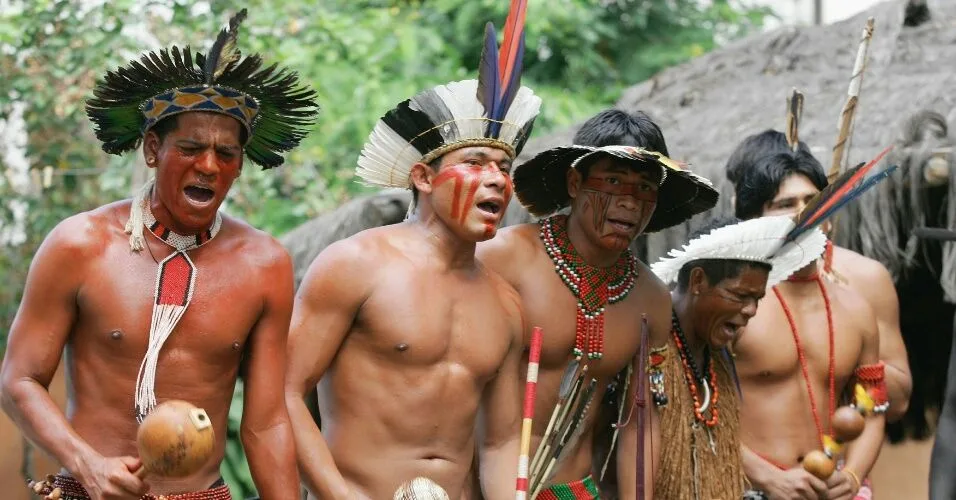For millennia, humanity has passed down knowledge, stories, and cultural wisdom through the spoken word. Before writing systems emerged, oral traditions served as the primary vessel for preserving collective memory, ensuring that essential information survived across generations.
The power of oral traditions extends far beyond simple storytelling. These ancient practices have maintained complex histories, philosophical teachings, medicinal knowledge, and social structures within communities worldwide. From Aboriginal Australians to Native American tribes, from African griots to Celtic bards, oral transmission has proven remarkably effective at safeguarding temporal knowledge that might otherwise have vanished into the mists of time.
The Architecture of Memory in Oral Cultures 🧠
Oral traditions rely on sophisticated memory techniques that modern society has largely forgotten. These mnemonic devices transform abstract information into memorable narratives, rhythms, and patterns that the human brain naturally retains. Indigenous cultures developed elaborate systems combining repetition, melody, physical movement, and emotional resonance to encode information in ways that ensured accurate transmission.
The Aboriginal Australians, for instance, have maintained songlines for over 65,000 years—making them the oldest continuous oral tradition on Earth. These songlines map entire landscapes through verses that describe landmarks, water sources, and seasonal changes. Each song functions as both a navigation system and a repository of ecological knowledge, demonstrating how oral traditions can preserve practical, scientific information with remarkable precision.
Why Memory Techniques Matter in Knowledge Preservation
Unlike written records that can be destroyed, lost, or deteriorate over time, oral knowledge lives within communities. It adapts to changing circumstances while maintaining core truths. The flexibility of oral traditions allows them to remain relevant across centuries, updating contextual details while preserving essential wisdom.
Research has shown that trained oral historians can recall vast amounts of information with accuracy comparable to written records. Studies of West African griots revealed they could recite genealogies spanning hundreds of years with minimal error, verified through cross-referencing with historical documents when available.
The Social Infrastructure Supporting Oral Knowledge ✨
Oral traditions thrive within specific social structures that prioritize knowledge transmission. These communities designate knowledge keepers—elders, griots, storytellers, or shamans—who undergo rigorous training to master their culture’s accumulated wisdom. This apprenticeship model ensures quality control and prevents information degradation across generations.
In many societies, knowledge transmission occurred through ceremonial contexts that reinforced the importance and sacredness of the information. Rituals, initiations, and seasonal gatherings provided structured opportunities for teaching and learning, embedding knowledge within meaningful cultural experiences that enhanced retention.
The Role of Community in Collective Memory
Unlike individual memory, which can be fallible, oral traditions distribute knowledge across entire communities. Multiple people hold overlapping pieces of information, creating redundancy that protects against loss. When one knowledge keeper dies, others maintain the tradition until new apprentices reach competency.
This distributed system also enables error correction. When stories are told publicly, community members familiar with the narrative can identify mistakes, ensuring accuracy through collective validation. This peer review process mirrors modern scholarly practices but operates through social rather than institutional mechanisms.
Temporal Knowledge Encoded in Story and Song 📚
Oral traditions excel at preserving temporal knowledge—information about time, seasons, astronomical phenomena, and historical events. Stories encode calendrical systems, marking important dates through narrative rather than numerical notation. Many indigenous cultures developed sophisticated astronomical knowledge transmitted entirely through oral means.
The Māori of New Zealand used oral traditions to preserve detailed knowledge of star navigation, enabling their ancestors to voyage across vast Pacific distances. Their stories contained information about stellar positions, ocean currents, weather patterns, and migratory paths of birds and fish—all essential for survival and exploration.
Historical Events Preserved in Narrative Form
Oral histories have proven surprisingly accurate in recording actual historical events. Scientists have validated Aboriginal stories about coastal geography that describe landscapes now underwater, matching geological evidence of sea-level changes from over 10,000 years ago. These narratives preserved accurate information across some 400 generations purely through oral transmission.
Similarly, Native American oral traditions from the Pacific Northwest contain detailed descriptions of massive earthquakes and tsunamis. Geologists later confirmed these stories matched physical evidence of a major earthquake in 1700, demonstrating that oral traditions can maintain accurate records of significant events for centuries.
The Linguistic Artistry of Oral Transmission 🎭
Oral traditions employ specific linguistic features that enhance memorability and transmission fidelity. Repetition, parallelism, formulaic expressions, and rhythmic patterns all serve mnemonic functions. Epic poems like Homer’s Iliad and Odyssey, originally oral compositions, demonstrate these techniques through recurring epithets, standardized scenes, and metrical structures that aided memorization.
Alliteration, assonance, and rhyme schemes aren’t merely artistic flourishes—they’re functional elements that make information stick in memory. The rhythmic nature of many oral traditions allows them to be chanted or sung, engaging multiple cognitive pathways and strengthening recall.
Performance as Knowledge Preservation
Oral traditions are inherently performative. The storyteller’s voice, gestures, expressions, and timing all contribute to the transmission process. This embodied knowledge engages audiences emotionally and physically, creating memorable experiences that transcend mere information transfer.
Performance contexts also allow for adaptive communication. Skilled storytellers adjust their delivery based on audience composition, emphasizing different aspects of stories for children versus adults, or for teaching specific lessons relevant to current community needs. This flexibility keeps traditions alive and applicable across changing circumstances.
Challenges and Vulnerabilities in Oral Systems 🌊
Despite their resilience, oral traditions face significant threats in the modern world. Language extinction represents the greatest danger—when a language disappears, so does the knowledge encoded within it. UNESCO estimates that one language dies every two weeks, taking with it irreplaceable cultural and practical knowledge.
Colonization, forced assimilation, and cultural disruption have severed transmission chains in many communities. When elders die before passing knowledge to younger generations, centuries of accumulated wisdom can vanish in a single generation. The boarding school systems that removed indigenous children from their communities specifically targeted oral traditions, recognizing their central role in cultural identity and continuity.
The Impact of Literacy and Technology
Paradoxically, the introduction of writing and digital technology has both preserved and threatened oral traditions. While documentation can save knowledge from complete loss, it can also reduce the perceived need for oral transmission, weakening the social practices that kept traditions vital.
Some communities have found that recording oral traditions strips them of their living quality. Knowledge that was dynamic, contextual, and performative becomes static when written down. The relationship between teacher and student, the ceremonial context, and the adaptive nature of oral transmission all suffer when traditions move exclusively into written or recorded formats.
Revitalizing Oral Traditions in Modern Contexts 🌱
Many communities worldwide are actively working to revitalize oral traditions while navigating contemporary challenges. Language revival programs, elder-youth mentorship initiatives, and cultural education projects aim to restore traditional knowledge transmission pathways.
Technology, when used thoughtfully, can support rather than replace oral traditions. Audio and video recordings create archives that supplement rather than substitute for living transmission. Digital platforms enable diaspora communities to maintain connections with knowledge keepers, extending the reach of oral teachings while preserving their experiential quality.
Integrating Oral Knowledge in Educational Systems
Progressive educational initiatives recognize the value of oral traditions and incorporate them alongside written curricula. Schools in indigenous communities increasingly employ elders as teachers, creating intergenerational learning environments where traditional knowledge receives equal status with academic subjects.
This integration benefits all students, not just those from oral tradition backgrounds. Research shows that narrative-based learning, storytelling techniques, and performative education methods enhance retention and engagement across diverse learner populations. The pedagogical wisdom embedded in oral traditions offers valuable insights for improving education broadly.
Scientific Validation of Traditional Ecological Knowledge 🔬
Modern science increasingly recognizes the value of knowledge preserved in oral traditions, particularly regarding ecology, botany, and environmental management. Indigenous communities have maintained detailed understanding of local ecosystems, plant properties, animal behaviors, and sustainable resource management through oral transmission.
Ethnobotanists work with traditional knowledge keepers to document medicinal plants and their applications. Many pharmaceutical discoveries have roots in traditional knowledge preserved orally for generations. This intersection of ancient wisdom and modern science demonstrates that oral traditions contain verifiable, practical information with contemporary relevance.
Climate Change and Traditional Environmental Knowledge
As climate change accelerates, scientists are turning to oral traditions for long-term environmental data. Indigenous knowledge about ecological patterns, species behaviors, and climate variations spans centuries, providing baseline information unavailable from modern instrumental records.
Arctic communities possess detailed knowledge about ice conditions, animal migrations, and weather patterns transmitted orally across generations. This information proves invaluable for understanding current changes and developing appropriate adaptation strategies, demonstrating that oral traditions preserve scientifically significant temporal knowledge.
The Future of Oral Knowledge Transmission 🌟
The future of oral traditions depends on recognizing their continued relevance in contemporary society. Rather than viewing them as antiquated relics, we must understand oral transmission as a sophisticated, resilient knowledge system with unique strengths.
Hybrid approaches that combine oral and written transmission may offer optimal solutions. Digital storytelling platforms, podcast initiatives, and multimedia projects can extend oral traditions’ reach while maintaining their narrative and performative qualities. The key is ensuring these technologies serve oral traditions rather than replacing them.
Building Bridges Between Oral and Written Knowledge Systems
Creating respectful dialogue between oral and literate knowledge systems requires recognizing the epistemological differences between them. Oral knowledge emphasizes relationship, context, and experiential learning, while written systems prioritize documentation, analysis, and abstraction. Both offer valuable perspectives, and neither should dominate the other.
Academic institutions are beginning to develop protocols for engaging with oral knowledge that respect its unique character. These include involving knowledge keepers as co-researchers, acknowledging community ownership of traditional knowledge, and creating space for oral testimony alongside written evidence in scholarly discourse.
Lessons from Ancient Wisdom for Contemporary Life 💫
Oral traditions offer more than historical curiosity—they provide practical wisdom for contemporary challenges. The emphasis on community, sustainability, long-term thinking, and interconnection found in many oral traditions addresses modern crises in meaningful ways.
Traditional stories often encode ethical frameworks, conflict resolution strategies, and social cohesion principles developed over millennia. These time-tested approaches to human challenges deserve serious consideration as we navigate complex global issues.
The practice of oral transmission itself teaches valuable lessons about attention, presence, and deep listening—skills increasingly rare in our distracted digital age. Engaging with oral traditions cultivates patience, respect, and the ability to hold complex information without written support, exercising cognitive capacities we risk losing.
Honoring the Keepers of Ancient Knowledge 🙏
The individuals who maintain oral traditions deserve recognition as guardians of humanity’s collective heritage. Their dedication to preserving and transmitting knowledge, often without institutional support or recognition, has kept vital information alive through turbulent historical periods.
Supporting oral traditions means supporting these knowledge keepers—providing resources for transmission activities, creating opportunities for intergenerational learning, and ensuring their wisdom receives appropriate respect and compensation when shared beyond their communities.
As we face unprecedented global challenges, the wisdom preserved in oral traditions offers perspectives we desperately need. These ancient knowledge systems, tested across centuries, contain insights about sustainability, resilience, adaptation, and human flourishing that remain profoundly relevant.
The power of oral traditions lies not only in what they preserve but in how they preserve it—through human connection, community engagement, and living transmission that keeps knowledge dynamic and applicable. By honoring and learning from these ancient practices, we enrich our understanding of human capability and expand the tools available for addressing contemporary challenges.
Unlocking this ancient wisdom requires humility, patience, and respect for knowledge systems different from our own. The rewards, however, are immeasurable: access to millennia of accumulated human experience, preserved not in dusty archives but in living memory, ready to guide us forward by connecting us with the tested wisdom of our ancestors.
Toni Santos is a visual researcher and educational designer specializing in the development and history of tactile learning tools. Through a hands-on and sensory-focused lens, Toni investigates how physical objects and textures can enhance understanding, memory, and creativity while exploring the intersections of ancient temporal systems, ritualized time practices, and cultural perceptions of chronology. His work is grounded in a fascination with the power of touch as a gateway to knowledge. From embossed maps and textured alphabets to handcrafted manipulatives and sensory kits, Toni uncovers the subtle ways tactile tools shape cognitive development and learning experiences, while engaging with ancestral calendars and forgotten systems, chrono-rituals and time portals, cultural time perception and myth, and devices and tools of time. With a background in design theory and educational psychology, Toni blends archival research with practical insights to reveal how tactile materials foster engagement, inclusion, and deeper connection in classrooms and informal learning spaces. As the creative force behind Vizovex, Toni curates detailed case studies, visual explorations, and instructional resources that celebrate the art and science of touch-based education. His work is a tribute to: The transformative role of tactile tools in learning The intersection of sensory experience, cognition, and temporal wisdom The craft and innovation behind educational objects and time devices Whether you’re an educator, designer, or lifelong learner, Toni invites you to explore the rich textures of knowledge—one touch, one tool, one discovery at a time.




